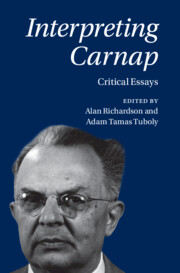Book contents
- Interpreting Carnap
- Interpreting Carnap
- Copyright page
- Contents
- Contributors
- Acknowledgments
- Abbreviations
- Introduction
- Part I Philosophy in New Dress
- Part II Naturalism and Method
- Chapter 5 Shades of Naturalism
- Chapter 6 On Quine’s Epistemological Objection to Carnap’s Analyticity
- Chapter 7 Carnapian Explication
- Part III The Logical and the Linguistic
- Part IV Science and Theories
- Bibliography
- Index
Chapter 7 - Carnapian Explication
Origins and Shifting Goals
from Part II - Naturalism and Method
Published online by Cambridge University Press: 01 February 2024
- Interpreting Carnap
- Interpreting Carnap
- Copyright page
- Contents
- Contributors
- Acknowledgments
- Abbreviations
- Introduction
- Part I Philosophy in New Dress
- Part II Naturalism and Method
- Chapter 5 Shades of Naturalism
- Chapter 6 On Quine’s Epistemological Objection to Carnap’s Analyticity
- Chapter 7 Carnapian Explication
- Part III The Logical and the Linguistic
- Part IV Science and Theories
- Bibliography
- Index
Summary
In current analytic philosophy, Carnapian explication has become a prominent method and theme again, also under the names of conceptual engineering and mathematical philosophy. But there are questions about the reach and limits of this method, and in particular, about the goals for which it is appropriate. In the present essay, this topic is approached by reconsidering the origins of Carnapian explication, in the sense of its original inspirations and guiding paradigms.This leads to the following questions: What were the underlying goals in those cases, thus the function or functions explication was supposed to serve, and how did it serve them? Also, were those functions sufficiently stable and uniform to provide helpful orientation for us, both with respect to Carnap and current appeals to explication? Insofar as answers to those questions are not as easy as one might think, already because the relevant aspects often remain implicit, an important dimension of explication should be subjected to further clarification and critique. What is at issue here, at bottom, is the dividing line, insofar as there is one, between philosophical and scientific goals, and with it, between the methodologies appropriate for each.
Keywords
- Type
- Chapter
- Information
- Interpreting CarnapCritical Essays, pp. 127 - 150Publisher: Cambridge University PressPrint publication year: 2024
- 2
- Cited by

